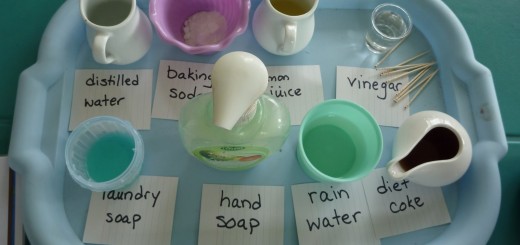Experiment 13: Red Cabbage Indicator
Here’s the set-up of our experiment. We don’t have any test tubes, so we used small plastic cups. I also recommend having a pH indicator color chart ((I got mine from page 13 at the Surfing Scientist) as the kids really were excited to examine the chart to see whether it was an acid or a base and to decide how strong it was compared some of the other things...























































